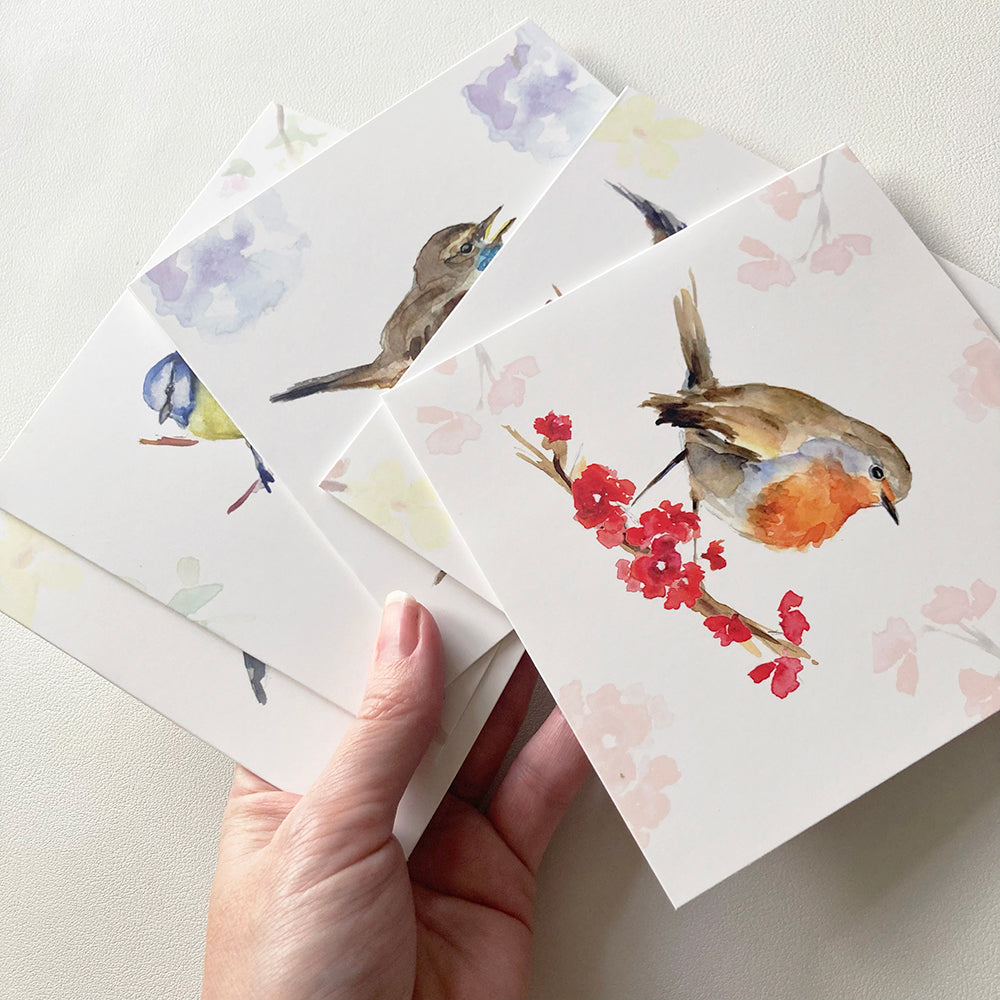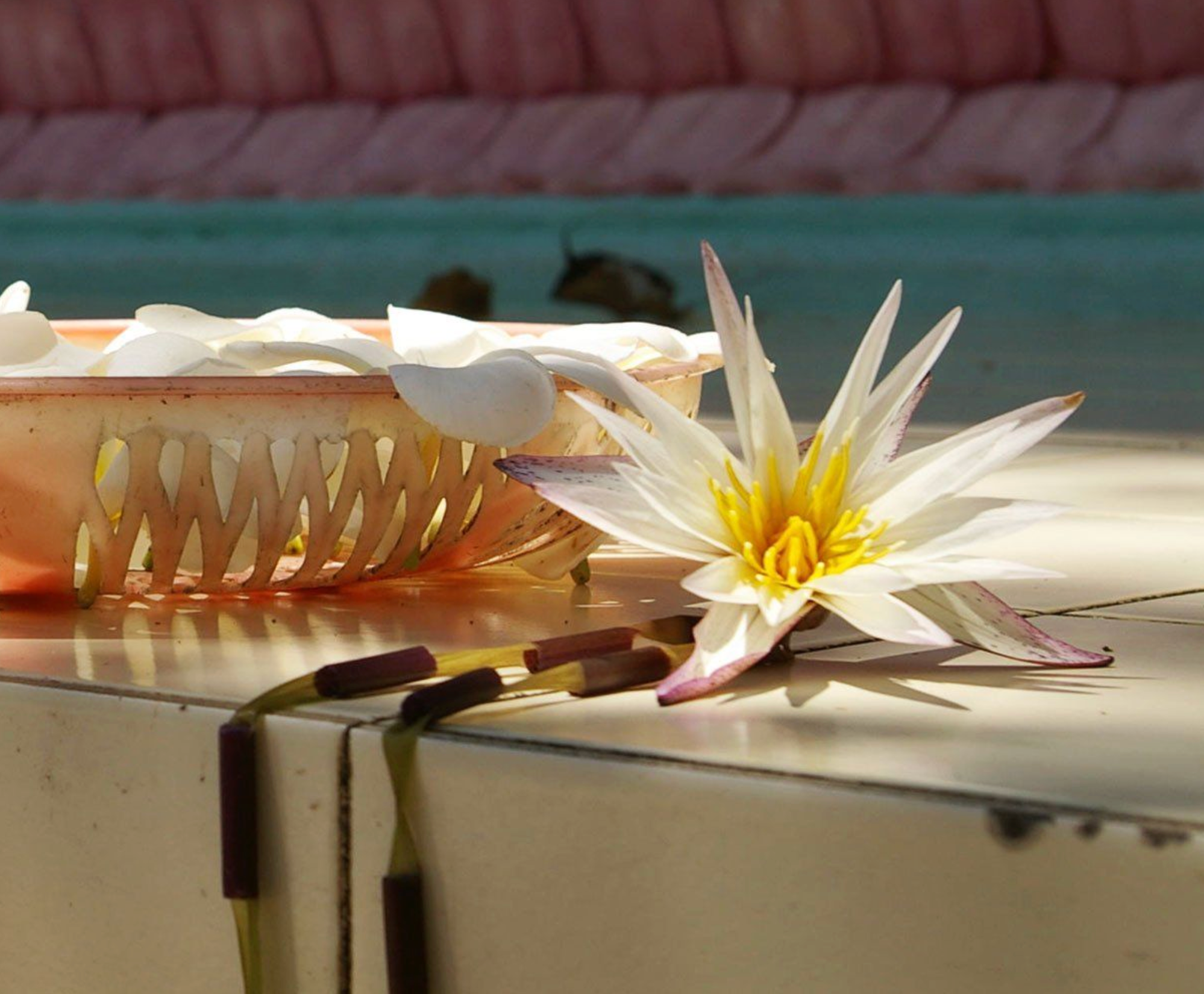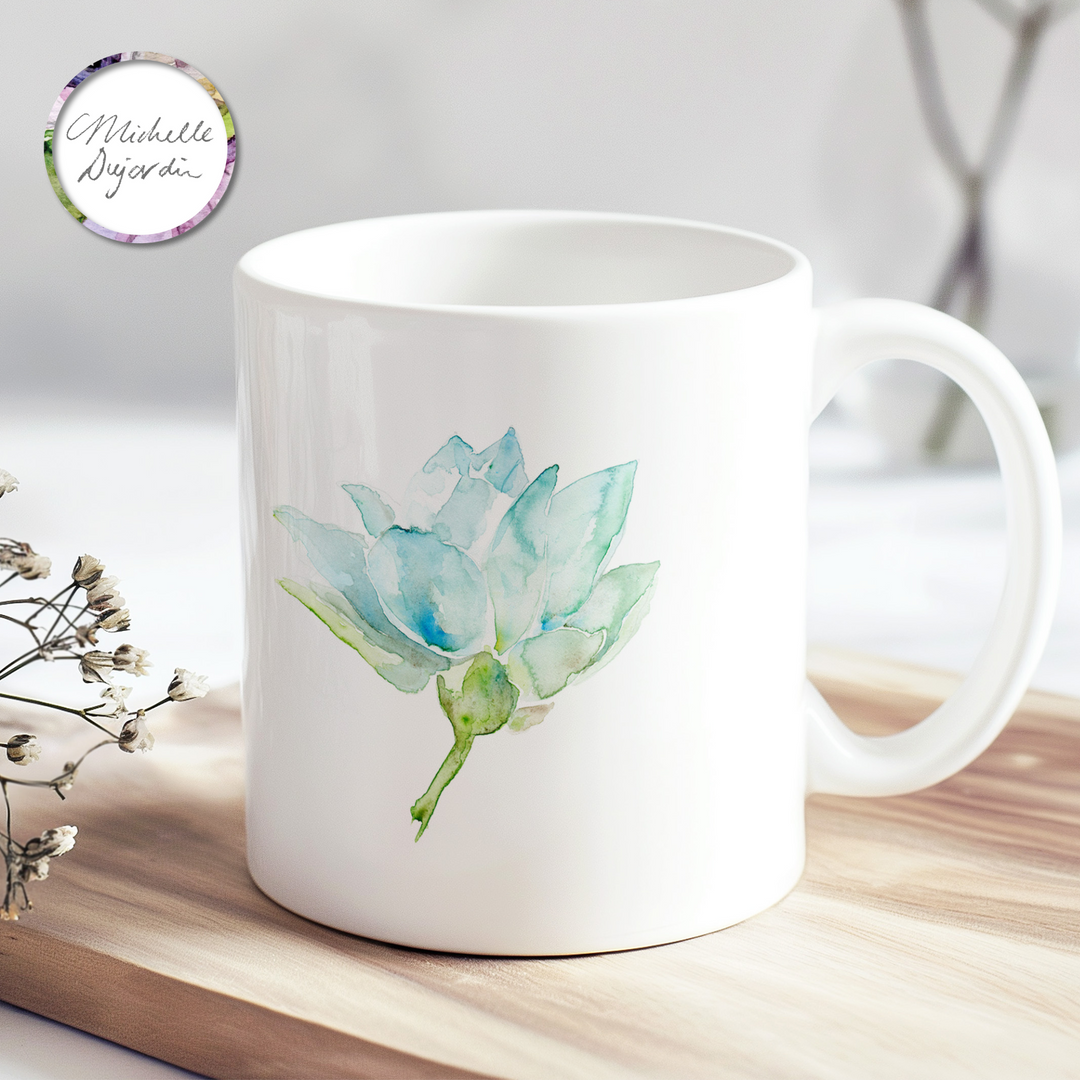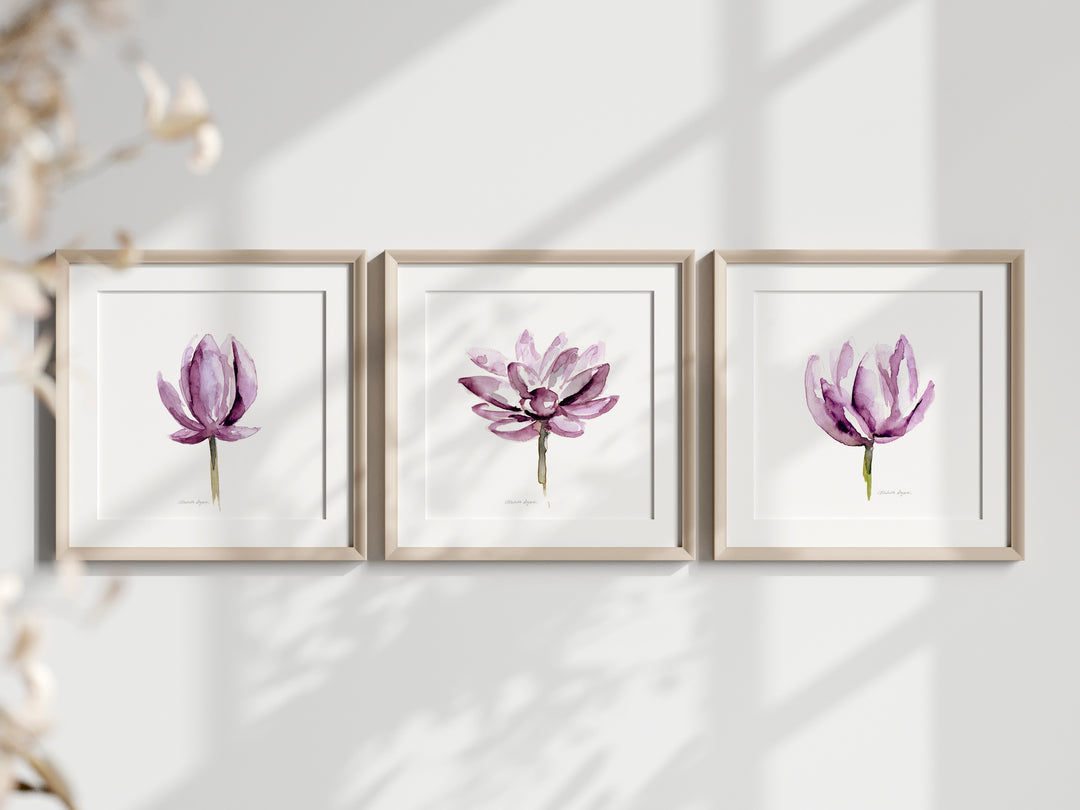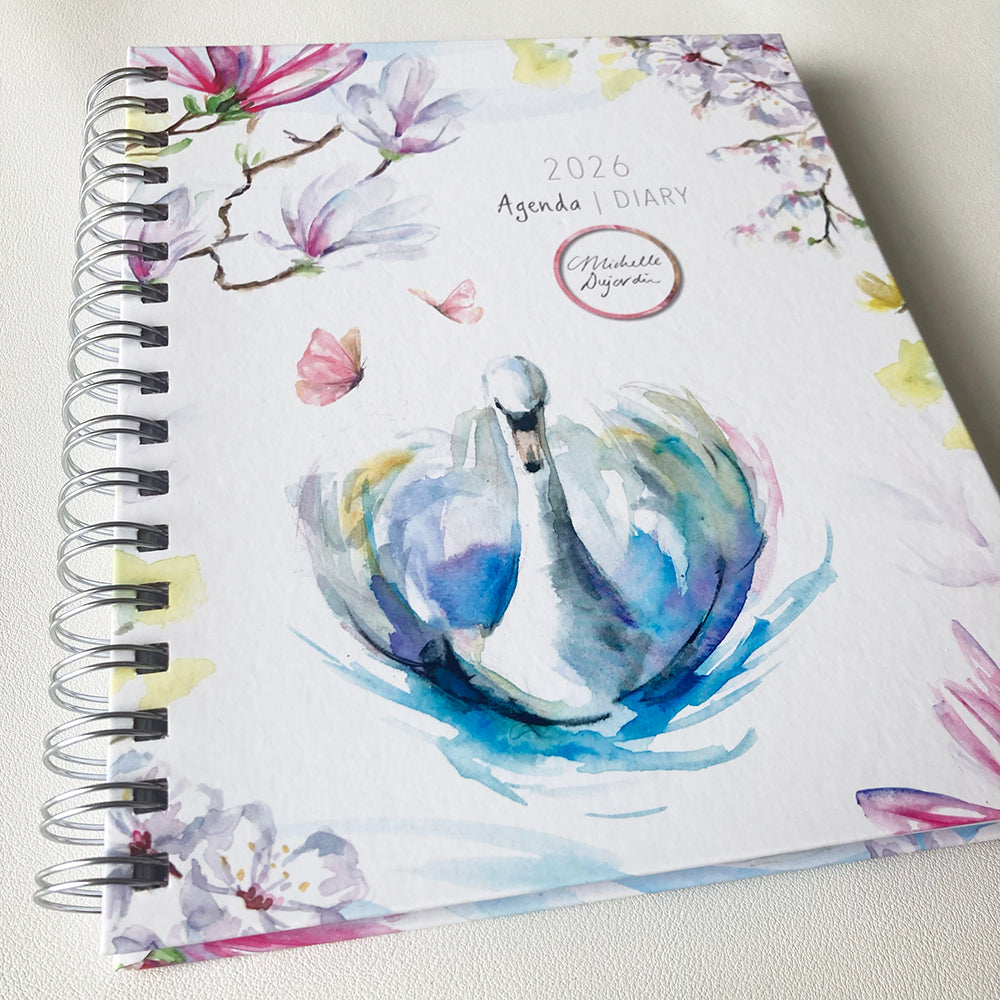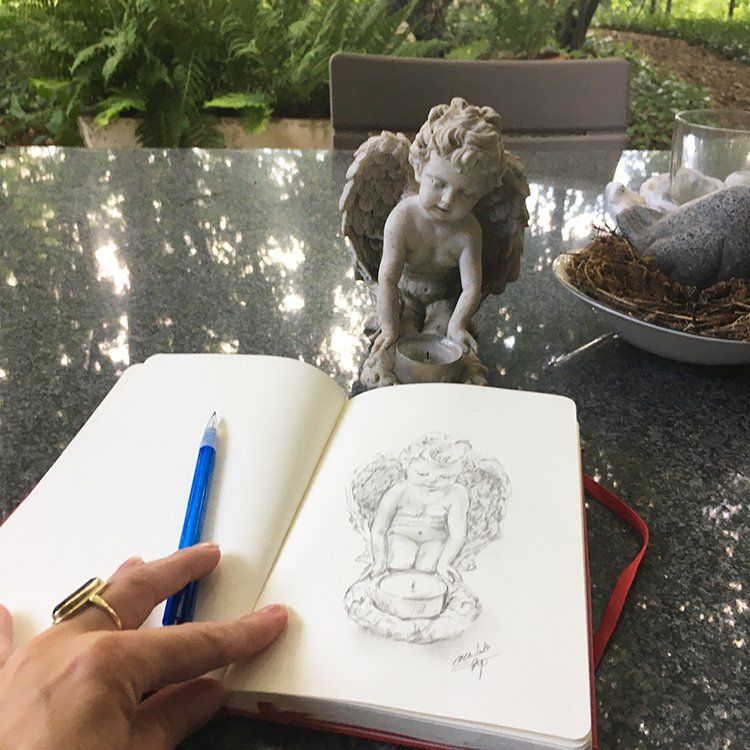Lotus or Waterlily? Understanding the Difference and Spiritual Meaning
Years ago, before I learned more about Buddhism, meditation, and spiritual rituals, I traveled through Sri Lanka and several other Asian countries. Besides the overwhelming beauty of the landscapes, I felt drawn to the peaceful, vibrant energy of temples and sacred sites—especially the beautiful lotus flowers, often seen at the altars, like the one below from the famous Temple of the Tooth in Kandy. At the time, my mind was often restless, but these travels opened something in me—an invitation to let go and open up spiritually. Looking back, I now realize it was the beginning of my own spiritual path, sparked by an early interest in Buddhism and inspired by the way this journey influenced my artwork.

One memory that stayed with me was from the south of Sri Lanka, where I took a boat to a small, quiet island. There, near the shore, stood a solitary Buddha statue—not part of a grand temple, just a serene figure surrounded by a few flower offerings. As the sun beautifully hit a single lotus flower on the altar—captured in the banner photo above—I had the sense that someone had placed the flower and scattered petals there just moments before, with care and devotion. That fleeting moment of peace and beauty is one I carry with me to this day.
Years later, I found myself painting many flowers in watercolor, especially lotus flowers and waterlilies. Some were based on photographs taken at the Rotterdam Zoo 'Blijdorp', as you can see below, while others allowed for more artistic freedom in color and form.

As I delved deeper into the symbolism of the lotus, I realized I wasn’t entirely sure about the difference between a lotus and a waterlily. It's a common question: What is the difference between a lotus and a waterlily? Visually, they are quite similar, yet they come from two distinct plant families. Waterlilies usually float on the water’s surface, with round leaves and flowers that rest gently on top. In contrast, lotus plants tend to rise above the water, with flowers and leaves held on long stalks. However, tropical waterlilies can also rise slightly above the surface, which can make identification tricky.
Another clue lies in the shape of the flower and petals. Waterlilies often have smaller, flatter petals, while lotus flowers appear more rounded and upright. Based on these differences, I now wonder if the flower in the sun I saw in Sri Lanka was actually a waterlily, and the flowers in the Rotterdam zoo photos are waterlilies as well. My own watercolor paintings, however, are more in line with the lotus—except perhaps the orange one!

Both the lotus and the waterlily hold deep spiritual meaning across cultures. They are powerful symbols of rebirth, enlightenment, and inner transformation. The lotus, in particular, is revered for its journey—growing through mud and murky water to bloom in beauty above the surface. It reflects how we, too, can rise from hardship and blossom into a more peaceful and awakened version of ourselves.
Back in Sri Lanka, I knew nothing of this symbolism. But the image of that single waterlily glowing in the sunlight gave me a quiet glimpse of something sacred—a stillness, a spiritual reality that I longed to carry with me, far beyond that single moment.









